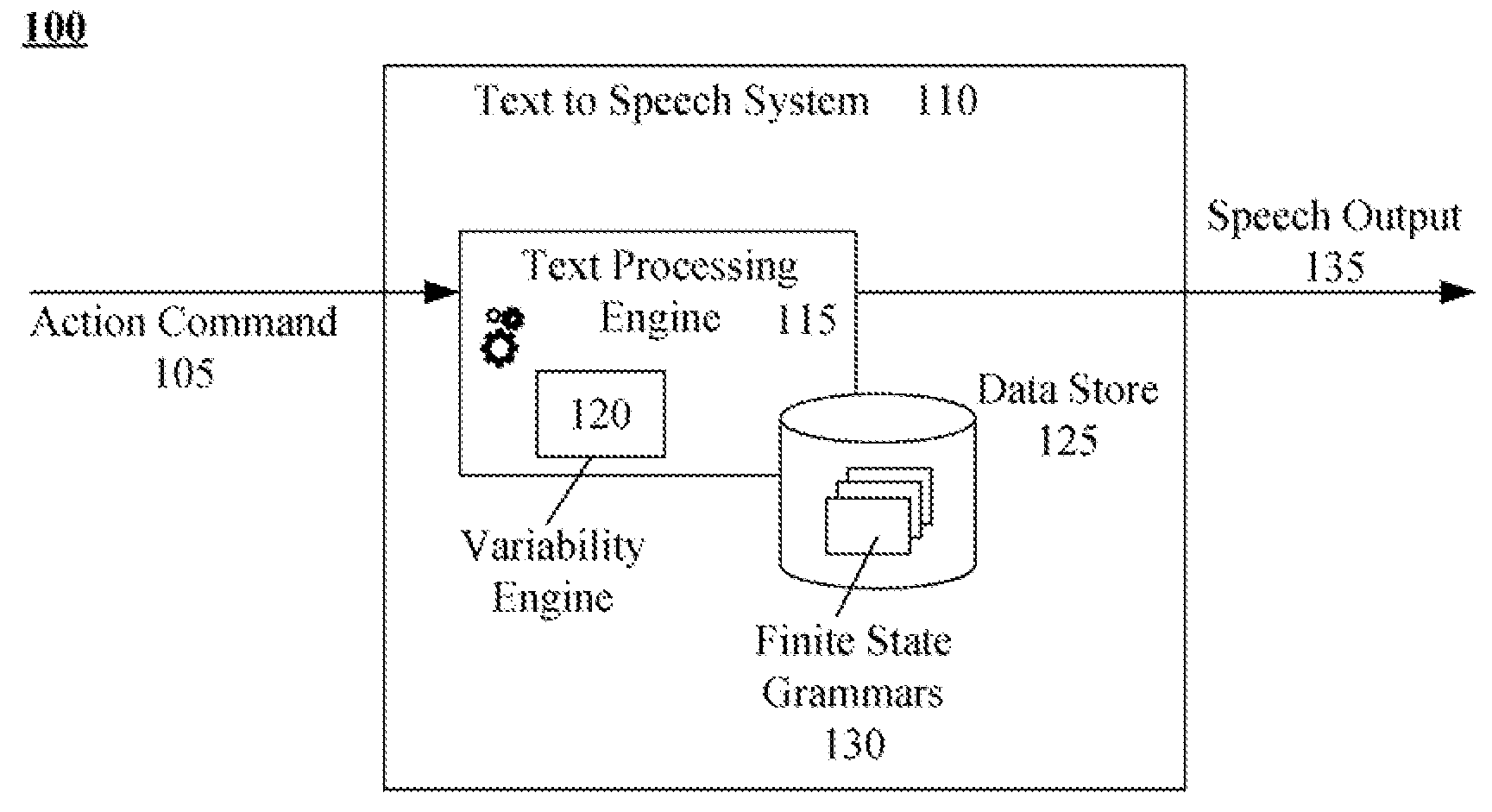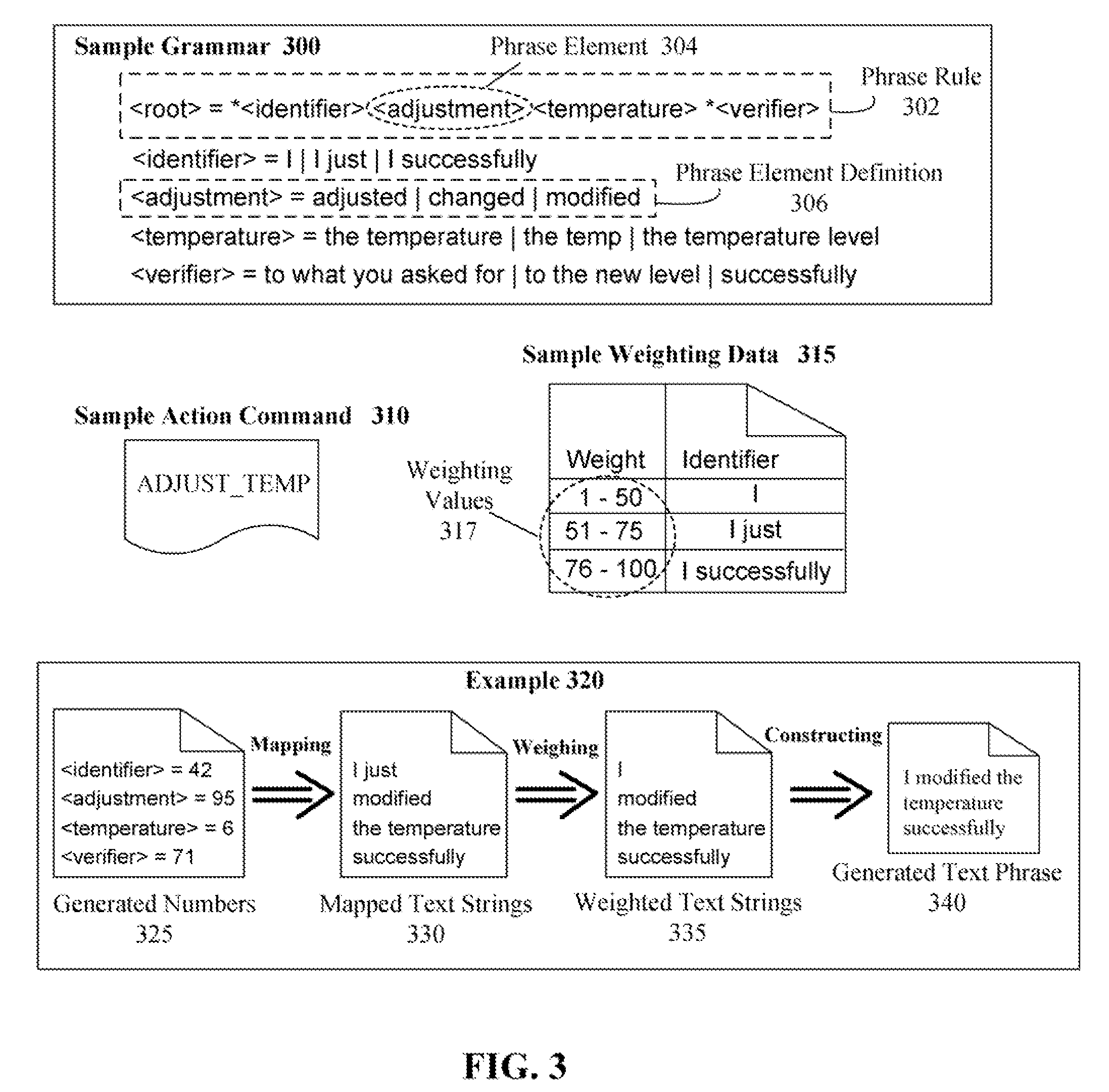Using finite state grammars to vary output generated by a text-to-speech system
a text-to-speech system and finite-state grammar technology, applied in the field of text-to-speech processing, can solve the problems of increasing output delay, reducing processing speed, and rigid system not easily allowing for variances in speech outpu
- Summary
- Abstract
- Description
- Claims
- Application Information
AI Technical Summary
Benefits of technology
Problems solved by technology
Method used
Image
Examples
Embodiment Construction
[0019]FIG. 1 is a schematic diagram of a system 100 for utilizing finite state grammars 130 to vary speech output 135 of a text-to-speech system 110 in accordance with embodiments of the inventive arrangements disclosed herein. In system 100, the text-to-speech (TTS) system 110 can accept an action command 105 which, when processed, produces speech output 135. The speech output 135 can vary from execution-to-execution to simulate variability typical of human-to-human interactions. Randomness can be produced using a variability engine 120 configured to generate random or pseudorandom numbers, which cause the finite state grammars 130 that produce the speech output 135 to produce non-predictable results.
[0020]In system 100, the text-to-speech system 110 can be any set of programmatic instructions stored in a machine readable memory, which cause the machine to produce the speech output 135 responsive to receiving the action command 105. The TTS system 110 can be a stand-alone program o...
PUM
 Login to View More
Login to View More Abstract
Description
Claims
Application Information
 Login to View More
Login to View More - R&D
- Intellectual Property
- Life Sciences
- Materials
- Tech Scout
- Unparalleled Data Quality
- Higher Quality Content
- 60% Fewer Hallucinations
Browse by: Latest US Patents, China's latest patents, Technical Efficacy Thesaurus, Application Domain, Technology Topic, Popular Technical Reports.
© 2025 PatSnap. All rights reserved.Legal|Privacy policy|Modern Slavery Act Transparency Statement|Sitemap|About US| Contact US: help@patsnap.com



